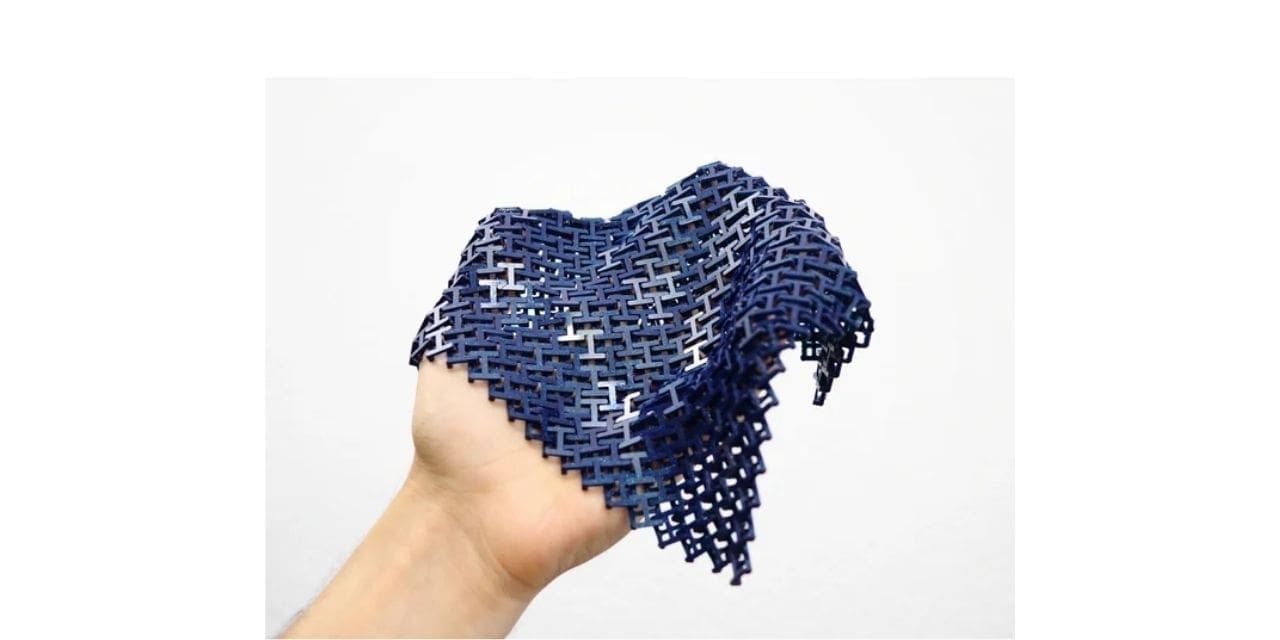The tensile strength of a novel 3D-printed fabric developed by researchers in Singapore and California may be adjusted to fit diverse purposes.
The material was created by scientists at Nanyang Technological University in Singapore and the California Institute of Technology. It is composed of nylon plastic polymers and consists of hollow octahedrons – a form with eight equal triangular faces – that interlock with each other.
Researchers from the University of Manchester have developed a fabric similar to chain mail armour. When wrapped in a flexible plastic envelope and vacuum-packed, the fabric solidifies by way of a physical principle known as the ‘jamming transition’ The transition stiffens the material, introducing new properties that could be leveraged in PPE, health care and sports. In tests, a small steel ball was dropped on the fabric both when relaxed and stiff to determine the extent to which its impact deformed the material. It deformed it by up to 26mm when it was relaxed but only 3mm when stiffened – a six times reduction in penetration depth.

